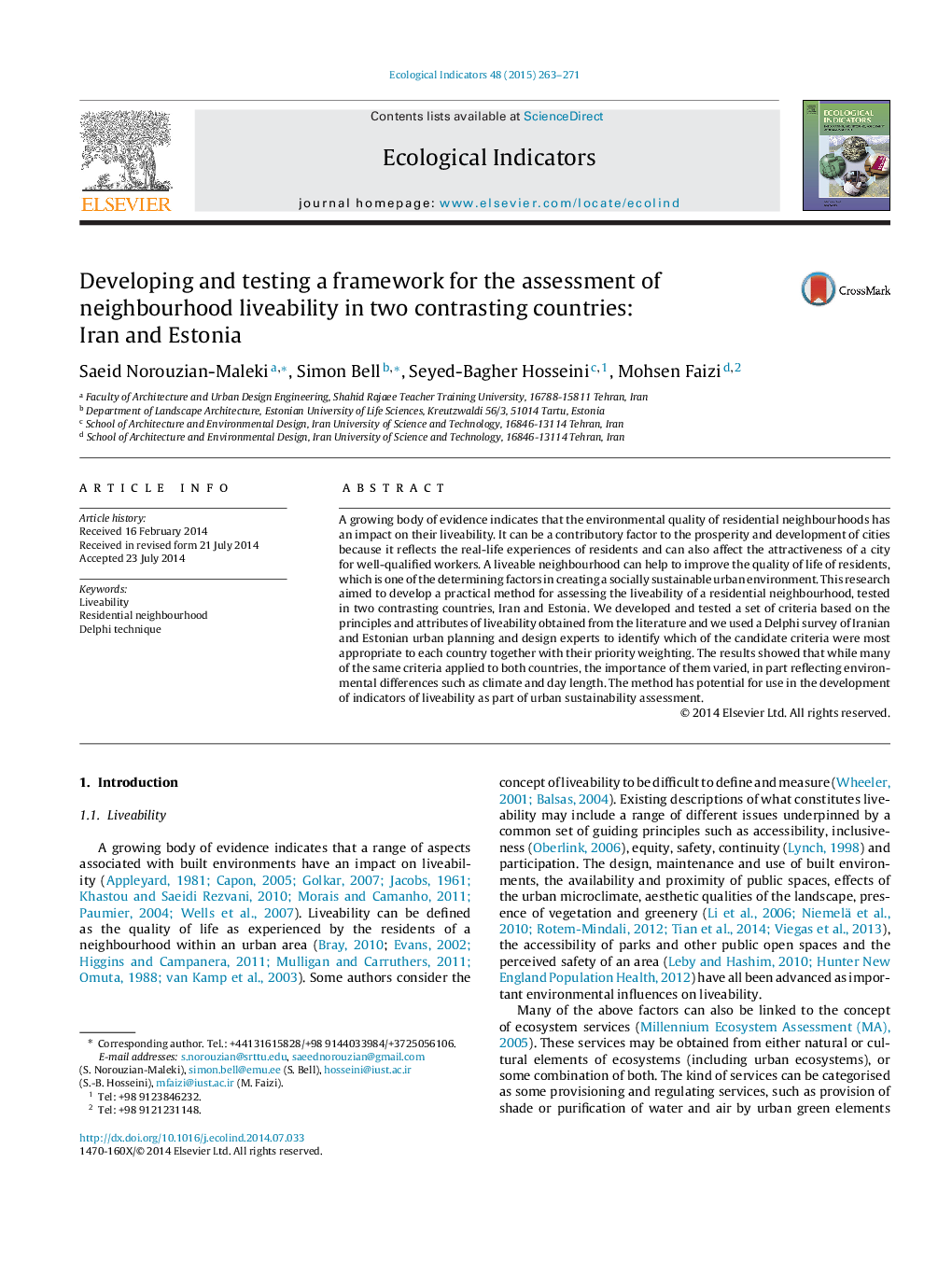| Article ID | Journal | Published Year | Pages | File Type |
|---|---|---|---|---|
| 6295001 | Ecological Indicators | 2015 | 9 Pages |
Abstract
A growing body of evidence indicates that the environmental quality of residential neighbourhoods has an impact on their liveability. It can be a contributory factor to the prosperity and development of cities because it reflects the real-life experiences of residents and can also affect the attractiveness of a city for well-qualified workers. A liveable neighbourhood can help to improve the quality of life of residents, which is one of the determining factors in creating a socially sustainable urban environment. This research aimed to develop a practical method for assessing the liveability of a residential neighbourhood, tested in two contrasting countries, Iran and Estonia. We developed and tested a set of criteria based on the principles and attributes of liveability obtained from the literature and we used a Delphi survey of Iranian and Estonian urban planning and design experts to identify which of the candidate criteria were most appropriate to each country together with their priority weighting. The results showed that while many of the same criteria applied to both countries, the importance of them varied, in part reflecting environmental differences such as climate and day length. The method has potential for use in the development of indicators of liveability as part of urban sustainability assessment.
Keywords
Related Topics
Life Sciences
Agricultural and Biological Sciences
Ecology, Evolution, Behavior and Systematics
Authors
Saeid Norouzian-Maleki, Simon Bell, Seyed-Bagher Hosseini, Mohsen Faizi,
